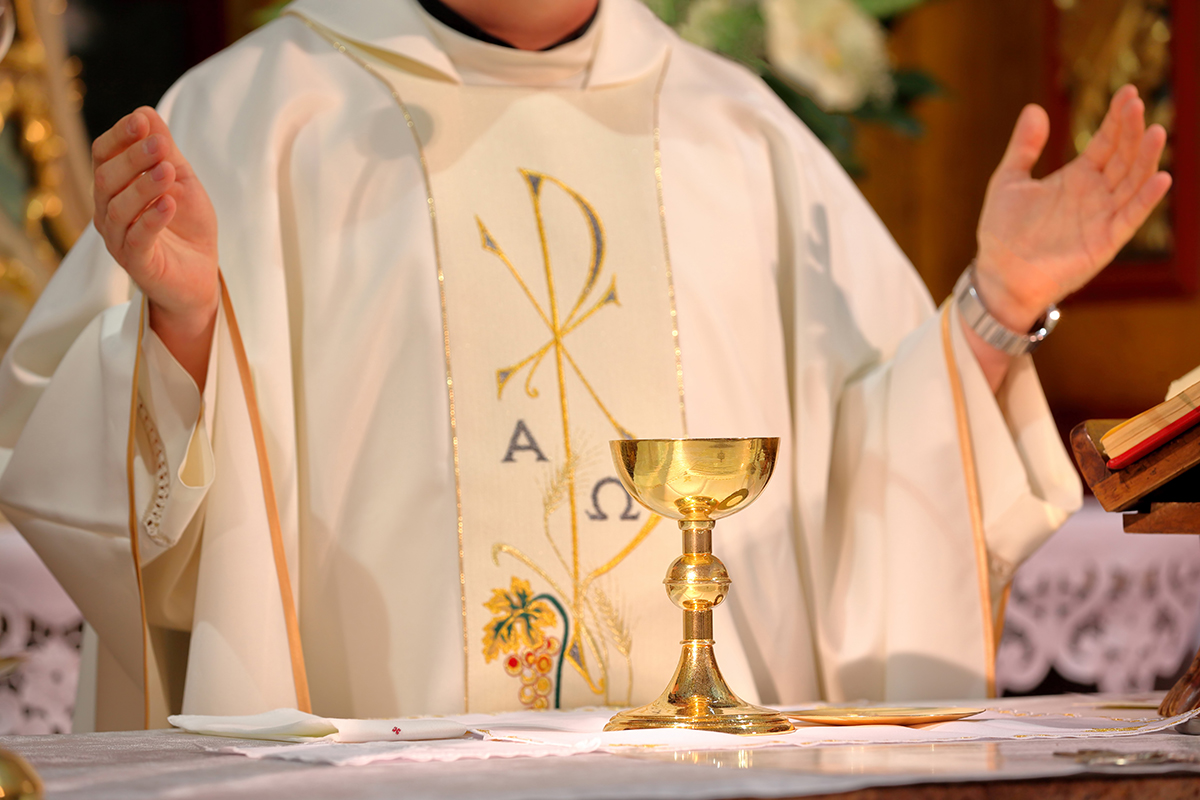
Question:
How can I explain the real presence of Jesus in the Eucharist when people ask about it?
Answer:
We’ve been addressing this question as a series in this column, beginning with the May 2022 issue. The kickoff in June of the National Eucharistic Revival makes this summer the perfect time to really hone in on how to explain the real presence of Jesus in the Eucharist.
We’ve been focusing so far on the deep biblical roots of the Mass in the Old Testament in order to see how the Mass did not appear out of thin air, but in fact has ancient origins in the word of God. This month, we’re going to conclude our look at the Old Testament by exploring the showbread of the Temple, also known as the Bread of the Presence.
Last month, we looked in detail at what we know about the Bread of the Presence from Exodus 25. We find another detailed description of the Bread of the Presence in Leviticus 25:5-9. Here, we see that the bread and wine aren’t just signs of God’s presence but are signs of the covenant between God and Israel as well. Specifically, we read that there are 12 cakes of bread on the golden table in the tabernacle—one for each tribe, as a sign of the covenant.
A second detail is that the bread was set before God continually; it was a perpetual offering, a continual sign of God’s continuing presence with his people, even though they were no longer at Mount Sinai. We also see in verses 1-4 that the menorah was to be kept burning continually. In other words, together with the perpetual presence of the bread is a perpetual flame to be kept lit.
Another intriguing detail about the table is found in Numbers 4:7-8, where we’re told that when the table is taken out of the tabernacle, it is to be covered with a veil. In other words, whenever the vessel which contains the bread of the face of God is removed from the tabernacle, it is to be veiled.
Looking back to Leviticus though, we see another crucial detail: the Bread of the Presence wasn’t just a sign of God’s presence and of the covenant, it was also a sacrifice. Recall what we saw in the details of the table in Exodus: together with the bread and the sacred vessels for the libations, the table was to have vessels for incense. Why is this important? Because in the Old Testament, incense always accompanies sacrifices as a symbol of the sacrificial offering rising to God.
In other words, the Bread of the Presence is both a meal and a sacrifice: a meal that God offers to the priests as his gift to the people, and a sacrifice that they in turn offer to God on behalf of the people.
A final detail from Leviticus: the sacrifice of the Bread of the Presence was to be made every Sabbath Day as a most holy offering. So the Sabbath (the day of rest) is also a day of sacrifice. For the Israelites, the Sabbath worship was more than prayer and study of Scripture … it was also sacrificial. And the unbloody sacrifice offered each Sabbath was that of the Bread of the Presence. On the Sabbath, the bread was offered to God and it was consumed by the priests on behalf of the people!
Clearly, the Bread of the Presence was of great significance for the people of Israel. It was one of the most sacred objects in the Holy Place; it was the Sabbath sacrifice; it was the sign of the covenant between God and his people; and it was the bread of God’s continual presence among his people.
We’ll conclude by looking at what one fascinating ancient Jewish tradition tells us about the Bread of the Presence. It concerns how the Bread of the Presence was understood in Jesus’ own time.
At that time, Jewish men went to Jerusalem and the Temple three times a year: for the feasts of Passover, Pentecost and Tabernacles. According to several sources, at each of these feasts, the Temple priests would bring the Golden Temple of the Bread of the Presence out of the Holy Place so that the pilgrims could see it. The priests would then take the sacred bread, elevate it for the pilgrims to see, and say these words: “Behold, God’s love for you!” This is an incredible practice, for no one but the priests were allowed to enter the Holy Place to see the sacred objects found there. But three times a year, the Jewish people were allowed to see one of the sacred objects hidden from view: the Bread of the Presence. Bread regarding which the priests proclaimed “Behold, God’s love for you!”
For first-century Jews, then, the Bread of the Presence was no ordinary bread. It was the bread of the face of God himself, the sign of God’s love for his people.
There is much more that could be said about the Bread of the Presence, but we’re going to conclude our discussion by making explicit what is already very clear: the Bread of the Presence—the visible sign of God’s love for his people—sets the stage for Jesus’ teaching on the Eucharist.
Why did Jesus choose bread and wine as the material for the Eucharist instead of a Passover Lamb? Because the Jewish people—with the bread and wine of the presence in the background—would easily see how bread and wine could represent God’s presence, and how it was important that these symbols be eaten. But even more (remember, Jesus always surpasses the Old Testament expectation) the bread and wine of the New Covenant, the new bread and wine of the presence, were not merely symbols of God’s presence and love … they were and are God himself.

Be sure to check out the additional resources at sfcatholic.org/answer. If you have a question you need an answer to, email cbassett@sfcatholic.org.
Chris Burgwald holds a doctorate in theology and is the director of discipleship formation for the Diocese of Sioux Falls.


